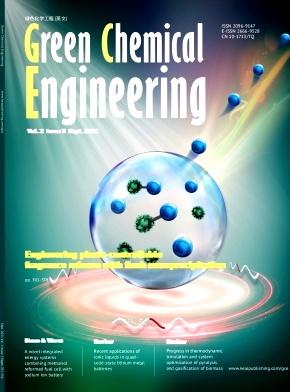建立了准确预测大灰分物质高热值的广义模型
IF 9.1
Q1 ENGINEERING, CHEMICAL
引用次数: 0
摘要
生物质较高的热值(HHV)是生物能源利用设计计算和数值模拟的重要特性。然而,现有的HHV预测模型在各种固体废物类型,特别是高灰分固体废物的预测精度和泛化能力方面面临挑战。本文提出了一种基于还原度(DR)和灰分(Cash)的HHV预测模型。首先,采用生物量的极限分析,建立DR的计算方法;利用Pearson相关系数分析DR、Cash与HHV的相关性;随后,利用回归分析建立HHV = f (DR, Cash)模型。此外,在相关系数(R2)、均方根误差(RMSE)和平均绝对误差(MAE)方面与以往文献的准确性进行比较。结果表明,该模型在灰分0 ~ 83.32 wt%范围内具有较好的预测精度,R2 = 0.854, RMSE = 0.900, MAE = 0.773。该模型对煤、生物炭和生物油的HHV预测精度更高,R2分别为0.961、0.989和0.939。最后,本工作提出了将DR用于HHV估算的方法,这不仅是一种简单准确的方法,而且广泛适用于各种燃料。本文章由计算机程序翻译,如有差异,请以英文原文为准。

Establishing a generalized model for accurate prediction of higher heating values of substances with large ash fractions
The higher heating value (HHV) of biomass is a crucial property for design calculations and numerical simulations in bioenergy utilization. However, existing models for HHV prediction faced challenges in terms of predictive accuracy and generalization capability across various solid waste types, especially for those with high ash content. This work proposed a novel HHV prediction model based on its reduction degree (DR) and ash content (Cash). First, ultimate analysis of biomass was applied to establish the calculation method of DR; then, the correlation between DR, Cash, and HHV was analyzed using the Pearson Correlation Coefficient; subsequently, the HHV = f (DR, Cash) model was developed using regression analysis. Furthermore, the accuracy was compared to previous literature in terms of correlation coefficient (R2), root mean square error (RMSE), and mean absolute error (MAE). Results revealed that this model provided attractive accuracy with R2 = 0.854, RMSE = 0.900, and MAE = 0.773 within a wide range of ash content from 0 to 83.32 wt%. Even higher accuracy was achieved with this model in predicting the HHV of coal, biochar, and bio-oil, with R2 of 0.961, 0.989, and 0.939, respectively. Conclusively, this work proposed the use of DR for HHV estimation, which was not only a simple and accurate approach but also widely applicable to various fuels.
求助全文
通过发布文献求助,成功后即可免费获取论文全文。
去求助
来源期刊

Green Chemical Engineering
Process Chemistry and Technology, Catalysis, Filtration and Separation
CiteScore
11.60
自引率
0.00%
发文量
58
审稿时长
51 days
 求助内容:
求助内容: 应助结果提醒方式:
应助结果提醒方式:


